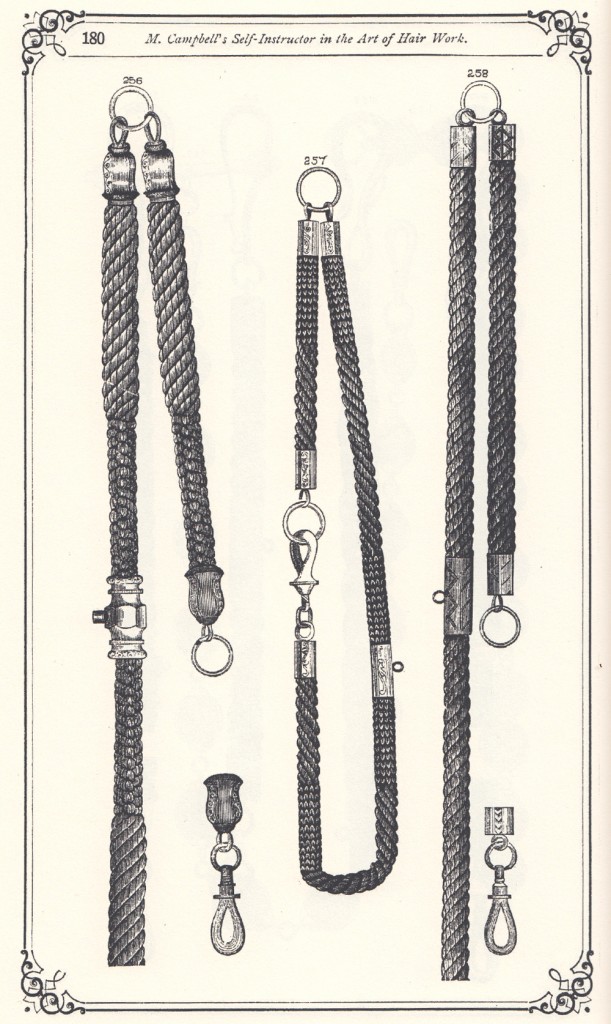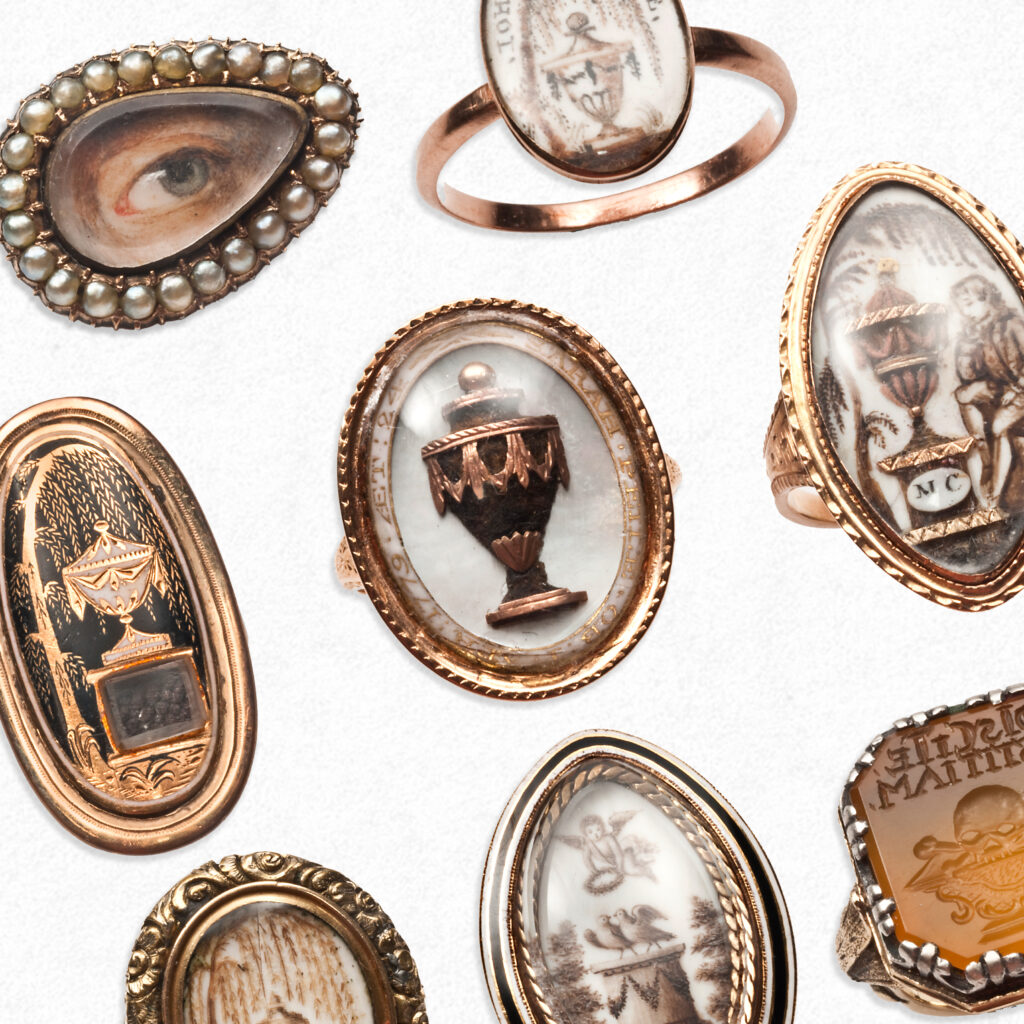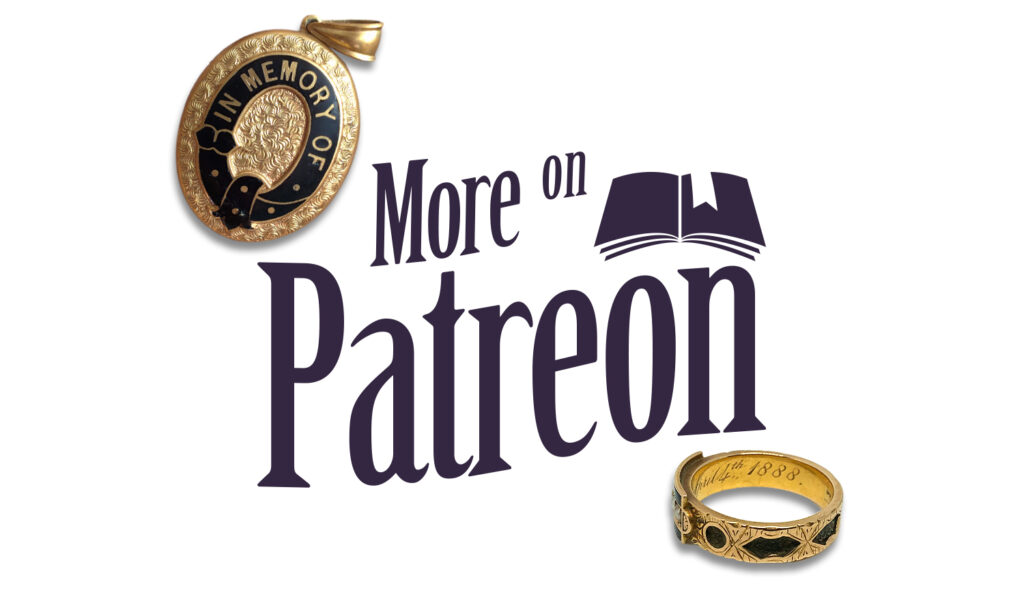Start Collecting
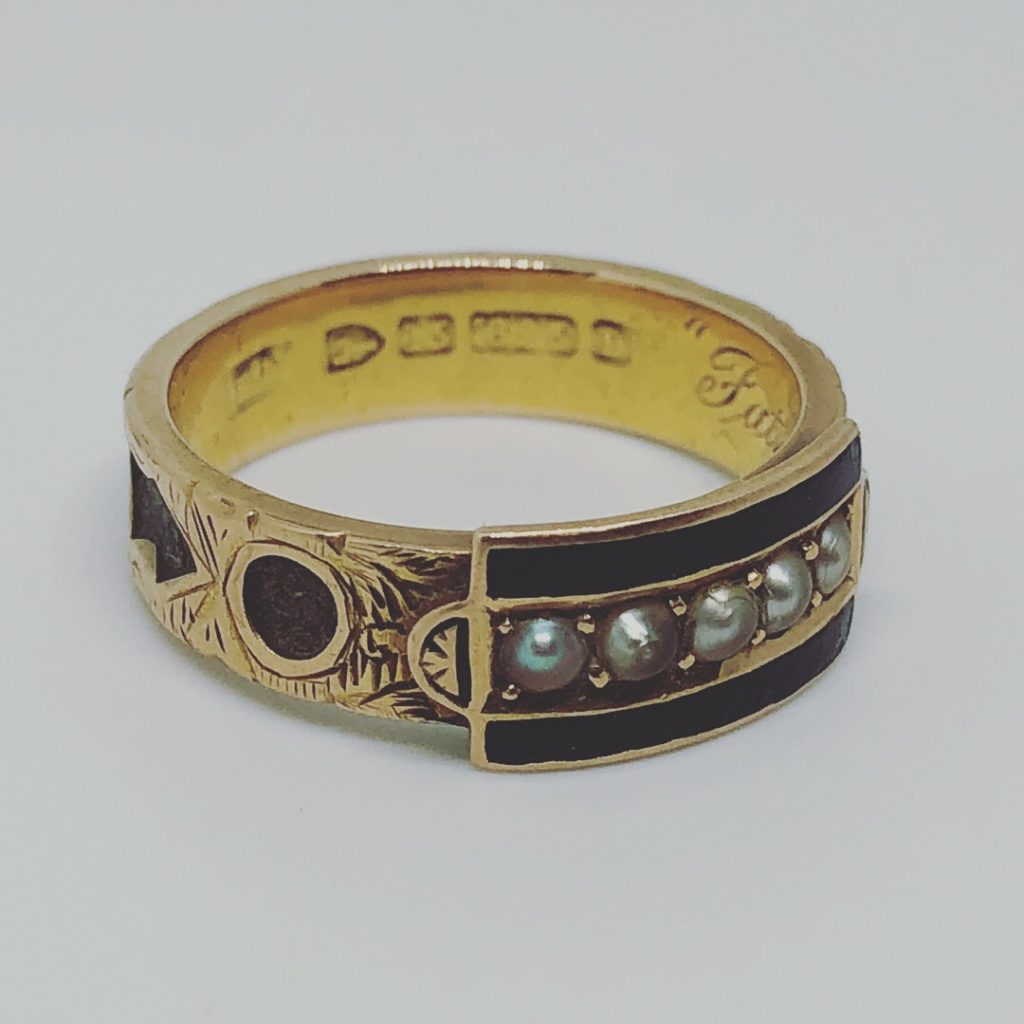
Mourning ring for ‘father’, black enamel, pearl, hair. 1888.
Jewellery prices are something not covered in Art of Mourning, however, the right to access these jewels and collect them is important to keep them alive for future generations.
Cost of historical jewellery is rising and access to them is becoming more scarce. There are ways to enter into collecting antique jewels through the more mass-produced mourning jewels created from catalogues in the latter 19th century. Their gold content is low, as they were made after the Hallmarking Act of 1854, where lower grade alloys could be used. Rolled gold over brass or copper was very typical, or pinchbeck, which was an alloy of copper and zinc resembling gold made larger jewels lighter and more affordable.
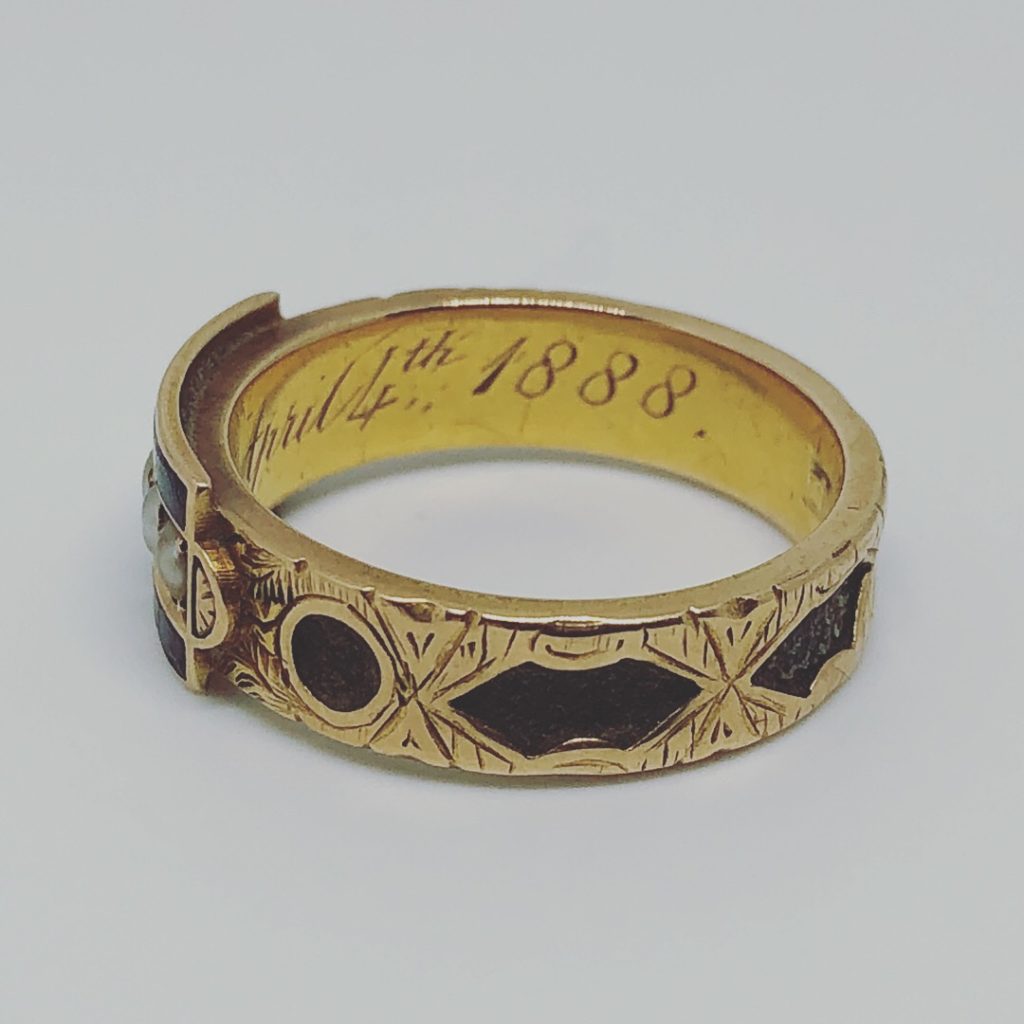
Mourning ring for ‘father’, black enamel, pearl, hair. 1888.
Sentimental and mourning rings in the latter 19th century shared exactly the same design. The open band showing woven hair inside was a typical sentimental style. Woven hair was a commonly used material, so noting that the use of hair is for ‘mourning’ is incorrect. Hair was used in fob chains and in all sorts of accessory jewels, as it was a cheap, strong and malleable material, which held strong sentimental value. The hair used was often colour matched by a jeweller at the point of sale to hair sold from the European continent from convents. It was typical of nuns to grow, cut and sell the hair to jewellers for the use of woven hair jewellery, but not exclusive to them. Hair given by a loved one was usually too short or not in the best quality to be woven into a chain, so it was discarded. Catalogues of the 19th century show various weaves as chains, brooches, pins and rings that could be ordered:
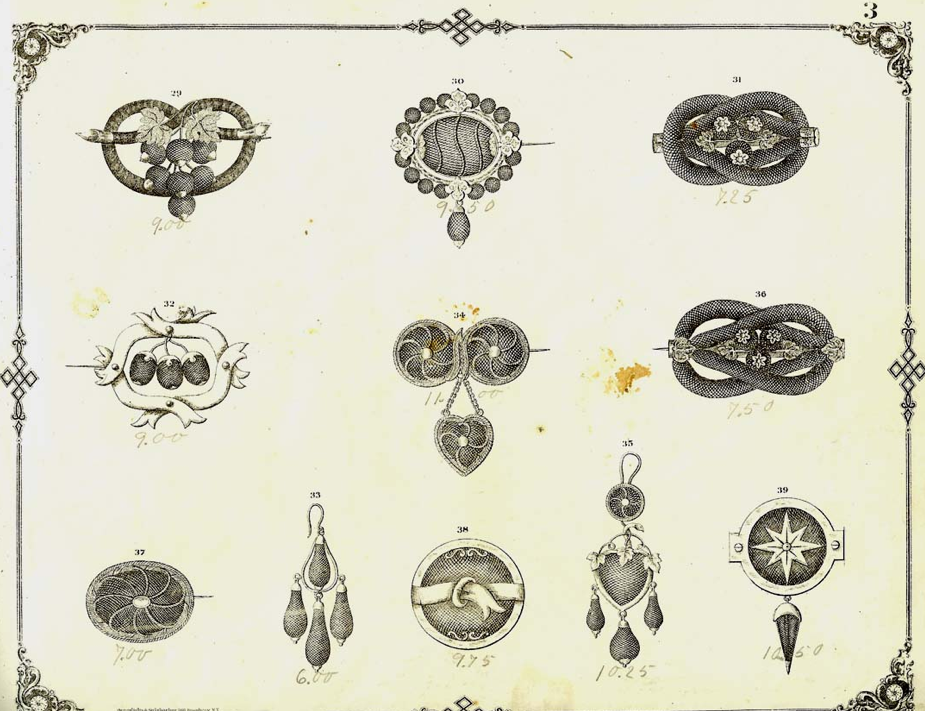
A Bernhard & Co. Catalogue
Mark Campbell’s ‘Self-Instructor in the Art of Hair Work’ (1867) shows just how accessible hair weaving was to the 19th century household, but also to the jewellery professional. Catalogues support this, as advertising chains showed their use as every-day accessories during the 19th century.
These chains would hold everything from watches to pencils. Hair was prodigiously used as a material for chains and many examples still exist today for low cost. By identifying these chains used in daily life, much can be seen from hair and its importance.
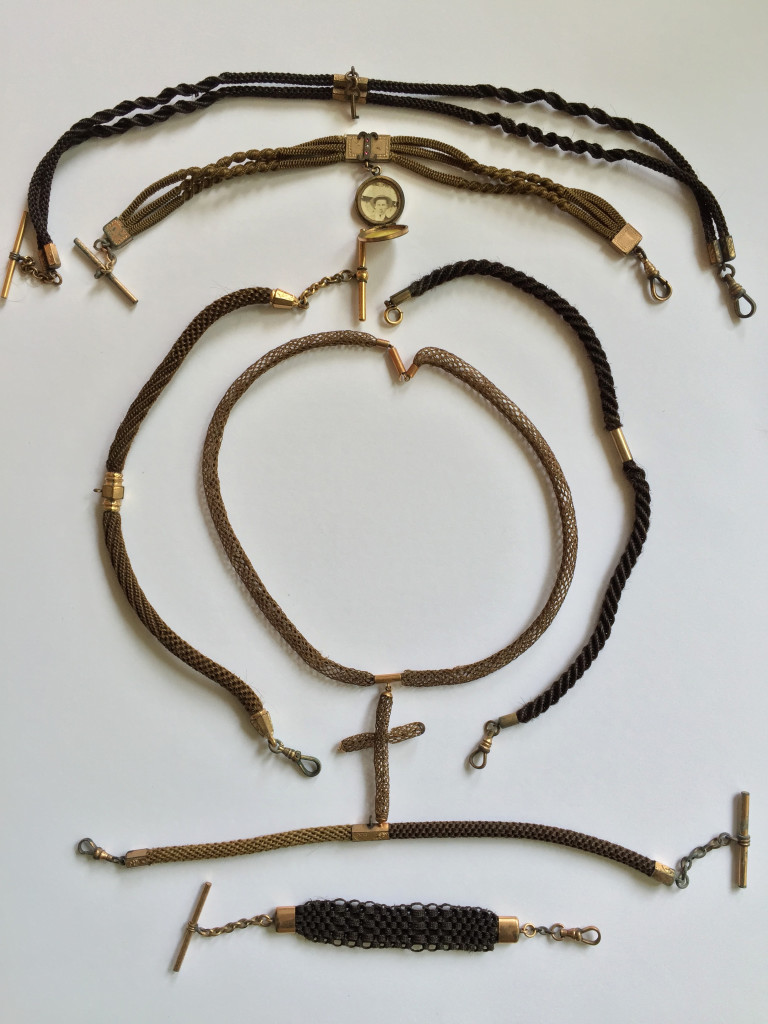
Collection of sentimental fob chains donated to Art of Mourning
For the new collector, these items are still available at low cost, but the collector should be wary of how delicate they are. Gum arabic or adhesive were used in hair weaving and palette-worked hair, yet this doesn’t mean that the treated hair is created to last the daily rigours of modern use. Moisture and bacteria can grow when the hair is exposed to the elements and skin contact, so be careful when collecting these items. They should be humidity controlled and in an ambient temperature, otherwise there is significant risk to their survival.

Victorian Standard
Brooches are also another accessible point for new collectors to begin. As with other jewels, such as brooches, they needed to grow in size due to costumes becoming larger, such as the crinoline in the 1850s. The aforementioned Hallmarking Act allowed for the lower grade alloys to be used in jewels, so many that date from the latter 19th century are very large, light and ornamental. Their use in mourning jewellery cannot be understated, as they were a primary signifier of a person in mourning and were more popular in daily costume than a mourning ring would have been. Being fastened at the neck, these jewels were quite prominent for others to notice and they avoided damage due to this. Many have been kept in families for their sentimental value, which is important for their provenance.
As they were cheaper to produce and brooches were a part of daily dressing for a lady, there are many brooches in the market. They are an antiquated piece of fashion, which makes them even easier to access, as brooch wearing today is not as popular as that of a locket or a ring, which are still in fashion.
Look for brooch design to tell its own tale. A brooch made in the 1840s is very different to one designed in the 1860s or 1880s. They each may have very similar styles, but they are different in their typography, ornamentation and shape.
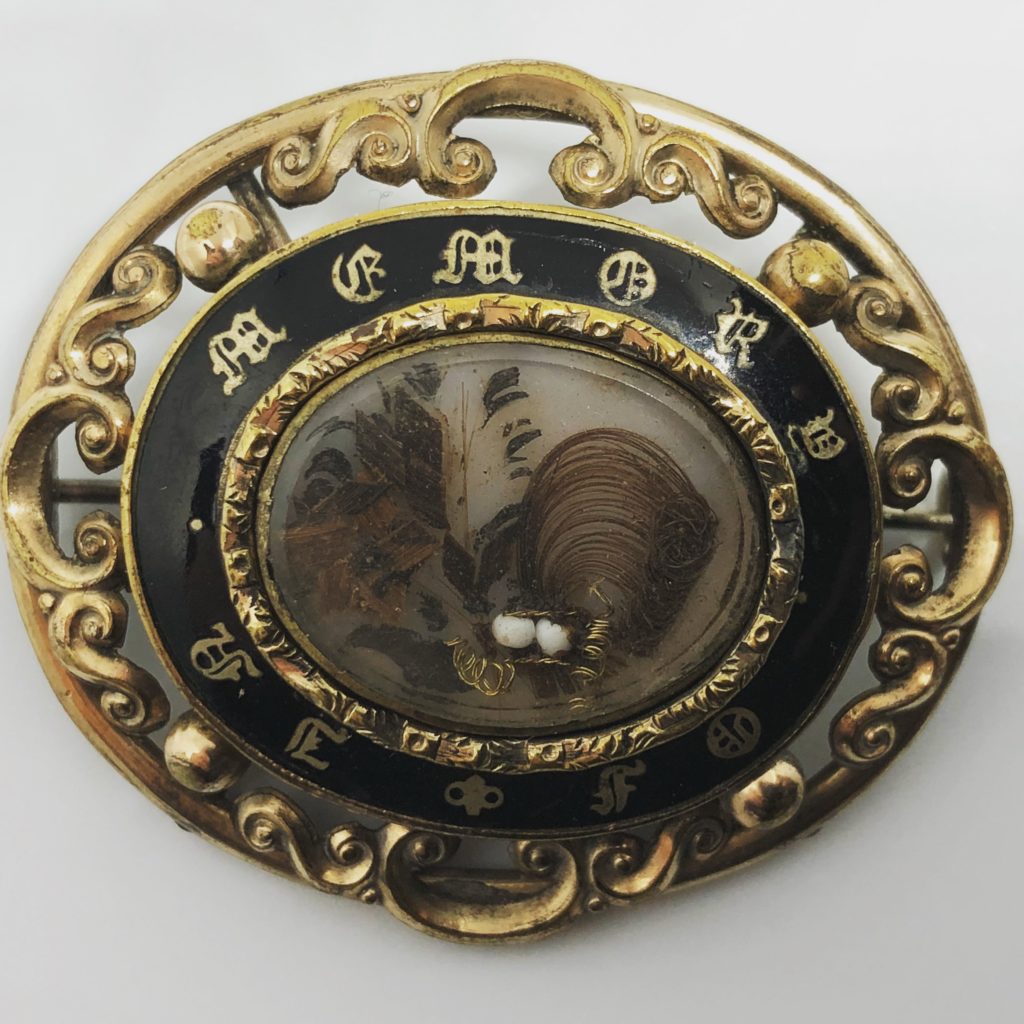
1840s palette-worked hair brooch with black enamel, pearl and gold wire.
The clear points of difference in these brooches is clear. Using the lettering dates the earlier piece, as this has more in common with the Gothic Revival style (read more about that here), while the brooch below has a cleaner, more modern font:

c.1870s black enamel mourning brooch.
Brooches are an excellent gateway into collecting, as they aren’t a popular jewel in modern fashion. Jewels that were mass produced, made from base metals and alloys, as well as those holding sentimental value have lasted in excellent condition. Because they’re not as desirable and there were cheaper jewels for their time, they can be purchased and researched at low cost.
For the new collector, there are many opportunities to enter into mourning jewellery collecting. These are tokens of living history; part of someone’s life. They show how life was in the early-modern period as daily artefacts, which is an insight that higher grade jewels cannot replicate. This is how people lived, as we do today. They had their custom, rituals and these jewels represent that in a very honest and open way. Holding a mourning jewel is the same as travelling back in time and it is the role of a collector to pass them down through history for others to appreciate.




